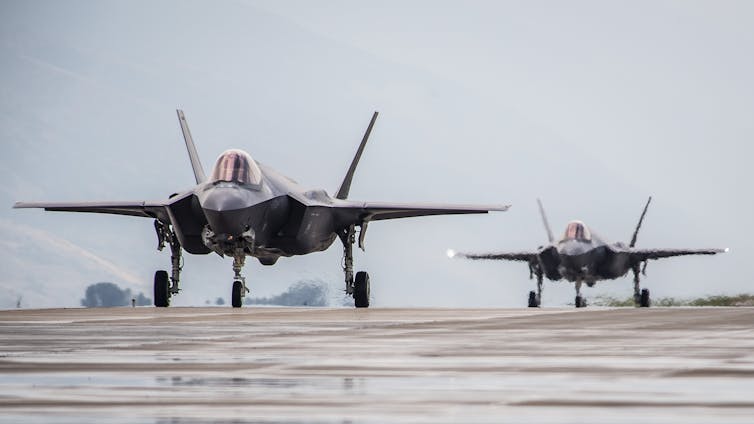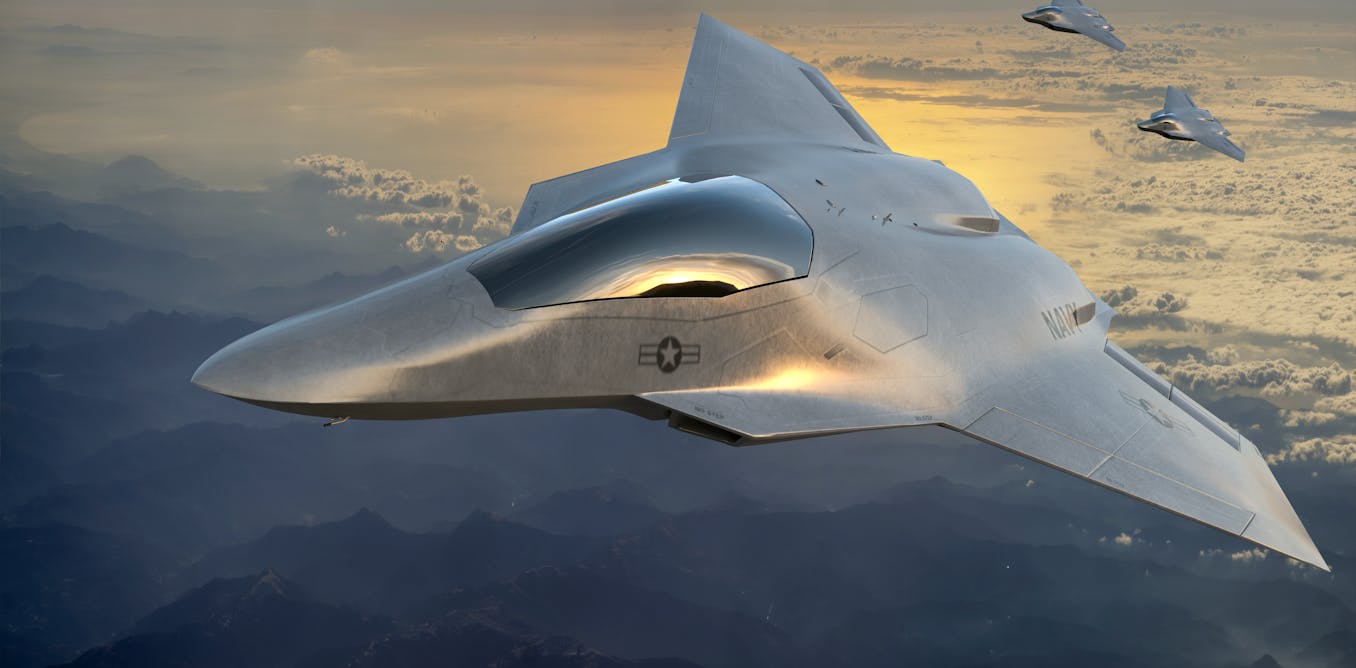The most advanced fighter jets in the world are known as “fifth generation”. They contain technologies developed in the first part of the 21st century. Examples of fifth generation fighter jets include America’s F-35 Lightning II and F-22 Raptor, China’s Chengdu J-20 and Russia’s Sukhoi SU-57.
Now, however, nations are moving ahead with the sixth generation of combat jets. In the past few months, China has flown its J36 and J50 prototype jets. Meanwhile, the US has selected Boeing to build a new fighter aircraft called the F-47.
As with previous generations, the sixth will incorporate major advances in aircraft design, onboard electronics (avionics) and weapon systems.
But how will the new generation of jets stand out from the previous one? Future combat jets will not see dramatic increases in maximum speed, nor in flight performance. Instead, the true innovations will be in how these systems operate and achieve dominance in aerial combat.
Like the fifth generation, the sixth will be dominated by stealth technology. This helps fighters jets to reduce their chances of being detected by infrared and radar sensors, to the point that when their signatures are eventually picked up, the opponent has no time to act.
Stealth is achieved through particular shapes of airframe (such as diamond shapes) and coatings on the aircraft – called radar absorbing materials. The airframe is the fundamental structural framework of an aircraft, encompassing the fuselage, wings, tail assembly and landing gear.
The diamond-like shapes that already characterise fifth generation jets are likely to remain in the upcoming generation of fighter, but they will evolve.
A common feature we’re likely to see is the reduction or complete removal of vertical tails at the back of the aircraft and their control surfaces. In current aircraft, these tails provide directional stability and control in flight, allowing the aircraft to maintain its course and manoeuvre.
However, sixth generation jets could achieve this control with the help of thrust vectoring – the ability to manipulate the direction of engines and therefore the direction of thrust (the force that moves the jet through the air).
The role of vertical tails could also be partially replaced by devices called fluidic actuators. These apply forces to the the wing by blowing high speed and high pressure air on different parts of it.

US Air Force / Paul Holcomb
The removal of the vertical tails would contribute to the fighter’s stealth. The new generation of fighters is also likely to see the use of novel radar absorbing materials with advanced capabilities.
We’ll see the introduction of what are known as adaptive cycle engines on sixth generation fighters. These engines will feature what’s known as a three stream design, which refers to the airstreams blowing through the engine. Current jets have two airstreams: one that passes through the core of the engine, and another that bypasses the core.
The development of a third stream provides an extra source of air flow to increase the engine’s fuel efficiency and performance. This will allow both the capability to cruise efficiently at supersonic speed and deliver a high thrust during combat.
It is likely that China and the US will build two separate fighters with different airframes. One will have a bigger airframe, designed for use in an area like the Pacific Ocean region. Here, the ability to fly further and carry a heavier payload will be key, because of the distances involved. Airframes designed for this region will therefore be larger.
Another fighter jet carrying a smaller airframe will be designed for use in areas such as Europe where agility and manoeuvrability will be more important.
The next wave of jets will have a system in the cockpit that gathers lots of information from other aircraft, ground surveillance stations and satellites. It would then integrate this data to give an enhanced situational awareness to the pilot. This system would also able to actively jam enemy sensors.
Another key feature will be the deployment of unmanned combat aerial vehicles (Ucavs), a form of drone aircraft. The piloted fighter jet would be able to control a variety of Ucavs, ranging from loyal wingmen to cheaper, unpiloted fighter jets that will assist the mission, including protecting the piloted fighter.
This will all be the responsibility of something called the advanced digital cockpit, a software-driven system that will use virtual reality and allow the pilot to effectively become a battle manager. Artificial intelligence (AI) will be a key feature of the support systems for the drones. This will allow them to be controlled with complete autonomy. The pilot will assign the main task – such as, “attack that enemy jet in that sector” – and the system will carry out the mission without any further input.
Another advancement will be the weapon systems, with the adoption of missiles that not only will be capable of travelling at hypersonic speeds, but will also incorporate stealth features. This will further reduce the reaction times of enemy forces. Directed energy weapons systems, such as laser weapons, could potentially appear in later stages, as this technology is under study.
Under America’s sixth generation fighter programme, the US Navy is working on a separate jet called the F/A-XX, complementing the F-47.
The UK, Italy and Japan are also working on a jet project known as the global combat air programme (GCAP). This will replace the Eurofighter Typhoon in service with the UK and Italy and the Mitsubishi F-2 in service with Japan.
Germany, Spain and France are working on a fighter programme called the future combat air system (FCAS). This could supersede Germany and Spain’s Typhoons and France’s Rafale.
The path for sixth generation fighter jets seems to have already been traced, but uncertainties remain. The feasibility of some of the characteristics described and development times and costs are not yet well defined. This interval of time was more than ten years for fifth generation fighter jets – and the sixth is going to be far more complex in terms of requirements and capability.
A new generation of fighter jet is expected to remain on active duty for something like 30 years. But warfare across the world evolves rapidly. It is unclear whether the design requirements we are fixing today remain relevant over the coming years.
![]()
David Bacci is affiliated with Cranfeild Defence & Security (CRanfield University) – Visiting Research Fellow



